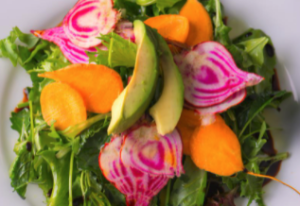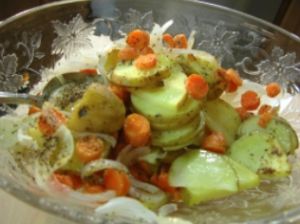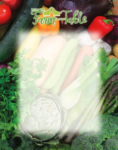Eating in Color: Orange, Part Two
The Eating in Color Series continues with another fantastic vegetable -- carrots!As addressed in Wednesday's Eating in Color: Orange, orange vegetables are great for your health! They're loaded with nutrients and antioxidants, plus they're good sources of fiber. Carrots do a great job representing orange vegetables when it comes to nutrient content -- one serving of raw carrots contains 428% of the Daily Value (DV) of vitamin A, 21% DV for vitamin K, 13% of the DV for vitamin C, and 12% DV for potassium. That same serving also has roughly 4 grams of fiber and no saturated fat or sodium.There are lots of ways to buy carrots -- your clients should choose the options that are right for them. In general, they should look for firm specimens with no bruising. They can get baby carrots, shredded carrots, sliced carrots or whole carrots without their green tops. These all store well in a sealed bag in the fridge.
Carrots do a great job representing orange vegetables when it comes to nutrient content -- one serving of raw carrots contains 428% of the Daily Value (DV) of vitamin A, 21% DV for vitamin K, 13% of the DV for vitamin C, and 12% DV for potassium. That same serving also has roughly 4 grams of fiber and no saturated fat or sodium.There are lots of ways to buy carrots -- your clients should choose the options that are right for them. In general, they should look for firm specimens with no bruising. They can get baby carrots, shredded carrots, sliced carrots or whole carrots without their green tops. These all store well in a sealed bag in the fridge. Now, when it comes to carrots with their tops, your clients will want to remove and use those tops right away -- if they stay on the carrots, then everything will get limp and bendy within a day or two. Plus, that whole bundle is harder to store in the refrigerator. Once their tops are removed, carrots should be washed thoroughly under cold water and then dried before being placed in a sealed container in the fridge.Want to get started? Here are some of my best carrot recipes, fresh from the recipe archive!
Now, when it comes to carrots with their tops, your clients will want to remove and use those tops right away -- if they stay on the carrots, then everything will get limp and bendy within a day or two. Plus, that whole bundle is harder to store in the refrigerator. Once their tops are removed, carrots should be washed thoroughly under cold water and then dried before being placed in a sealed container in the fridge.Want to get started? Here are some of my best carrot recipes, fresh from the recipe archive!
- Spring Salad with Shaved Carrots and Beets
- Shredded Carrot Salad
- Carrot Ginger Soup
- Honey-Glazed Carrots
- Spring Parsnip Carrot Gratin
 No worries if carrots don't excite your audience -- there are lots of amazing orange vegetables out there! Try...
No worries if carrots don't excite your audience -- there are lots of amazing orange vegetables out there! Try...
- Butternut Squash
- Orange Bell Peppers
- Pumpkins
- Sweet Potatoes
- Orange Tomato Varieties
Now, if you'd like to catch up, here's the Eating in Color Series so far...
Eating in Color shines a spotlight on healthful fruits and vegetables by discussing the health benefits of each color of fruits and vegetables, then exploring a particular fruit and vegetable from each color group.As always, there's more in the Nutrition Education Store!


